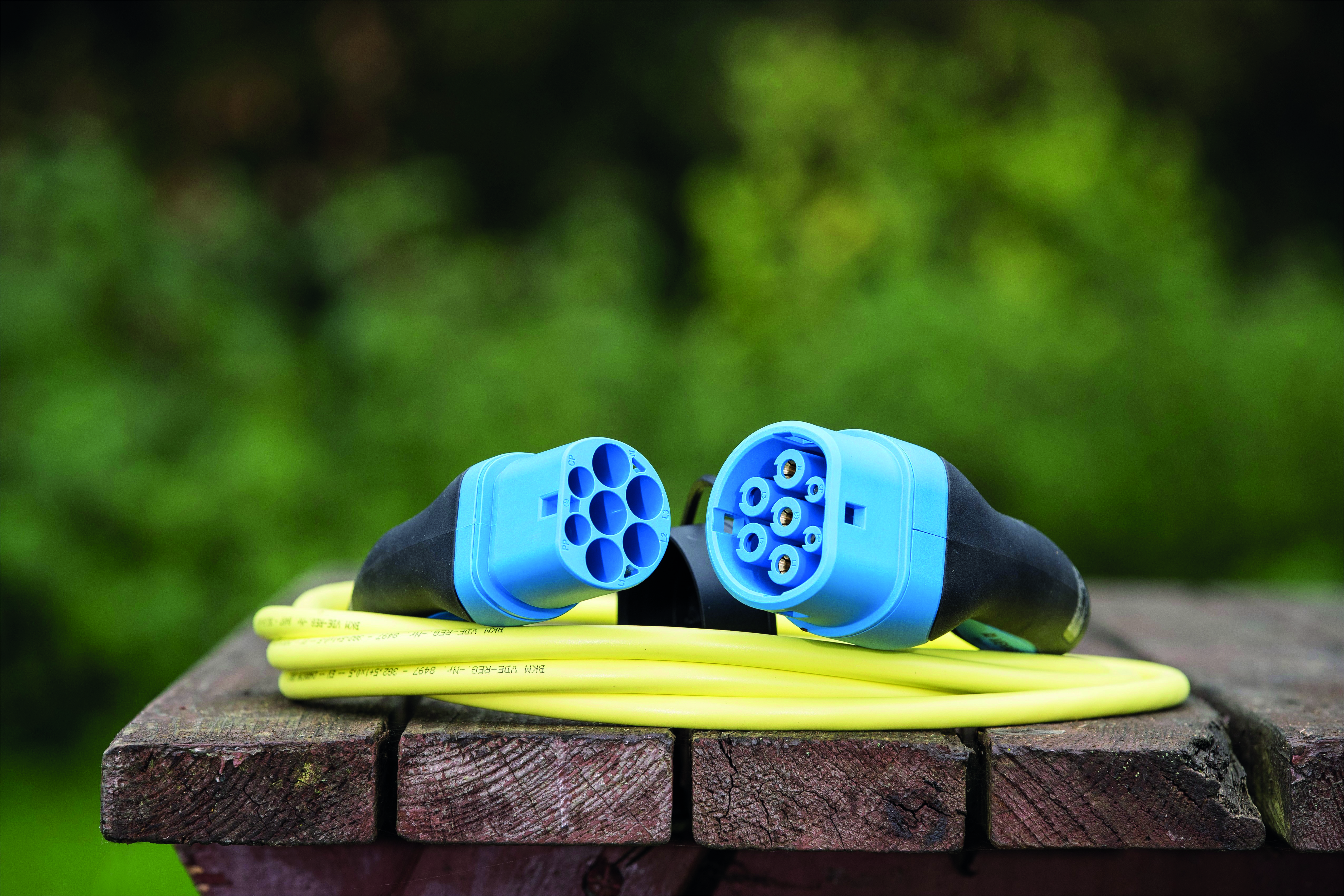Making the switch to electric

Recent reports suggest that the government is set to bring forward the ban on sales of new petrol and diesel vehicles, including hybrids and plug-in hybrids, from 2040 to 2030. Evidence shows that there is support for such measures, but that barriers remain in place before fleets can confidently make the switch to electric vehicles
The UK government is seeking to phase out petrol and diesel powered vehicles to get everyone into electric or other zero emission vehicles in order to reach its net zero emission targets by 2050.
Recent reports suggest that the government is set to bring forward the ban on sales of new internal combustion engine (ICE) vehicles, including hybrids and plug-in hybrids, from 2040 to 2030.
It comes following a concern voiced by the Committee on Climate Change (CCC) that the original 2040 date wasn’t soon enough to meet the net-zero target.
Evidence shows that many in the fleet and road transport industry are willing for this to happen.
According to the results of a GreenFleet poll ran at the JUICE online event on 30 July, the overwhelming majority of delegates (96 per cent) believed that ending the sale of new ICE cars and vans could be done before 2040.
Half of the respondents thought that the ban should take effect by 2030, 20 per cent thought it would be feasible by 2035, and twelve per cent thought that 2032 is achievable.
Twelve per cent meanwhile thought it would be possible to bring the ban into effect earlier than 2030. Only six per cent said that 2040 is when the ban should come into effect.
Many organisations have electric vehicles on their fleet, and there is a rising trend for large fleets to make public commitments to transition their fleets to zero emission vehicles, to show to industry and government that demand is there.
However, the issue of charging infrastructure comes up as a barrier time and again.
Sir John Armitt, Chair of the National Infrastructure Commission (NIC), told GreenFleet: “Electric vehicles are now a realistic option for many drivers and businesses as the technology matures and manufacturers invest in new models. But if we’re to get close to 100 per cent electric new car and van sales by 2030 – which our National Infrastructure Assessment says is achievable – then a major barrier to changing behaviours has to be addressed: range anxiety.
“There is a straightforward solution. Government should build on the steps it has already taken to boost take-up and commit to a national rapid-charging network. This would allay the entirely understandable fear many drivers have of being left without power far from home, with nowhere to plug in and quickly charge up. Subsidising chargers in rural and hard-to-reach areas where the market is unlikely to deliver in the short term is a good place to start. But progress also means getting councils to set-aside more of their parking spaces for future conversion to charge points, and making sure the electricity grid is optimised for this growth in demand.
“The government’s national infrastructure strategy, expected this autumn, is a great opportunity to commit to this approach and send a clear signal to drivers that the UK’s roads are ready for an electric future.”
It is not just the limited number of public charge points that is cited as an issue - its the network’s ease of use that is also a hindrance. Drivers currently still often need to use multiple apps and cards to pay to charge on different networks. This can lead to what Zap Map has called ‘charger anxiety’ – concern about being able to access the right charge point when needed.
In a recent survey of the GF100 Most Influential - a cross-industry group of individuals who have all helped shape the low-carbon transport agenda over the year, 23 per cent (the majority) said that the uptake of zero emission vehicles is hindered by the lack of public charging and its difficulty of use.
In an attempt to boost the UK’s charging infrastructure, in January this year the Government doubled its EV charger fund allocation to £10 million.
Fleet demand
Many fleets are already on the journey to switching their fleet to zero emission vehicles, and many have made public commitments to electrify their fleets in the coming years.
Environmental charity Global Action Plan started the Clean Van Commitment, which is a public pledge to move to zero emission vans in cities by 2028.
Signatories to the Clean Van Commitment include ENGIE, Tesco, Network Rail, London Borough of Tower Hamlets.
The Climate Group meanwhile commenced EV100, where companies make a public commitment to integrate electric vehicles into their fleets or to install charging infrastructure.
The Climate Group has also launched the UK Electric Fleet Coalition, which aims to provide a strong and positive message to government that some of the biggest companies in the UK are prepared and eager to make the transition to electric vehicles, but they need that ambition matched by the government.
Founding member of the UK Electric Fleets Coalition, Openreach, has one of the UK’s largest fleets with around 27,000 vehicles. In a move that kicks off its electric vehicle ambitions, the company has recently placed an order of 270 fully electric Vivaro-e vans and nine Corsa-e cars.
EV100 signatory Mitie has reached a major milestone in its electric vehicle rollout, having taken delivery of its 250th electric vehicle.
However, Mitie has pointed out that there needs to be more charge points – both on-street residential and rapid chargers as well as greater availability of larger electric vans before it can meet its pledge to convert its entire fleet to electric by 2030.
Simon King, director of sustainability and EV strategy at Mitie, said: “As this important milestone shows, our electric vehicle commitment is picking up pace as we rapidly rollout electric vehicles all over Britain, putting 75 new EVs on the roads every month. However, if the UK is going to meet crucial targets to reduce carbon and minimise the effects of climate change, we need more businesses, like Heathrow Airport, as well as government departments and city councils, to join us in the switch to electric vehicles. The first step to achieving this is ensuring an adequate number of charge points, in the places where they are needed most, are installed all over the UK, so that drivers are sure they can charge where and when they need to.”
Eliminating emissions from vehicles
The ban of the sale of new petrol and diesel vehicles has concentrated the efforts of vehicle manufacturers to produce zero emission vehicles, with most auto-makers having an electrified variant out, or soon to be out.
Despite upheaval caused by the Covid-19 pandemic, 2020 to date has been positive for the electric car market. According to SMMT figures, registrations for pure-EVs in the first eight months of 2020 are up 157 per cent compared to 2019. More than 44,700 pure-EVs have been sold in 2020 to the end of August. Looking at all plug-in vehicles, that figure rises to over 74,500 units.
Globally, Deloitte has adjusted its market predictions to say that by the end of the decade, a third of all new car sales worldwide will be electric. This would bring the total number of electric vehicles sold in a single year to 31.1 million globally; ten million more than previously forecast.
EV sales are still expected to reach 2.5 million worldwide in 2020, despite disruption from Covid-19. Based on a compound annual growth rate of 29 per cent, Deloitte’s research estimates this to top 11.2 million in 2025 and 31.1 million by 2030. At this milestone, fully electric vehicles will account for 81 per cent of all new EVs sold according to the research, outperforming their plug-in hybrid peers.
A current issue cited as a barrier to electric vehicle adoption is their high upfront cost. But with any new technology, there is a high price tag until economies of scale are realised.
Jamie Hamilton, head of electric vehicles at Deloitte, commented: “The price premium attached to many electric vehicles restricted some early adopters but, as the cost of EVs have converged with petrol and diesel equivalents, the pool of prospective buyers is set to increase. A wider range of new electric vehicles, combined with a growing secondhand market, means EVs are becoming a more viable option for many. However, overcoming consumer concerns around driving range and perceived lack of charging infrastructure will be important factors as more drivers consider the practicalities of switching to electric.”
Availability of vehicles
While the electric car market is growing, a limited choice of EVs is another issue cited by fleets as a barrier. What’s more, for those electric models that are out, fleets have been put off by long waiting times. Last year, it was reported that popular electric models had lead times of more than one year as demand outstripped supply
However, in April, What Car? conducted analysis of all 26 electric models currently on sale and showed that lead times had fallen dramatically, with the majority of new electric vehicles now available within 12 weeks.
Steve Huntingford, editor of What Car?, said: “As the new car market recovers from the coronavirus crisis, many of the most popular electric vehicles can be delivered as quickly as a petrol or diesel vehicle, which is a real boost for prospective buyers keen to get on with electric motoring.”
The analysis showed that the Kia e-Niro had a waiting list that extended to more than a year, and is now available within 26 weeks.
The availability of large electric vans has been brought up as an issue, with many fleets lamenting that what’s on the market is unable to meet their range and cargo requirements.
Mitie’s Simon King told GreenFleet last September that in order to electrify its entire fleet by 2030, then “we need to see real, viable alternatives to diesel models for our larger van fleet. At the minute, there’s nothing out there, meaning we have some 2,000 vehicles that can’t yet be switched to electric”.
However, a number of vehicle manufacturers have announced they are introducing electric vans to the market, of varying size and range.
Creating jobs
Labour has recently called on the government to end the sale of new petrol, diesel, and hybrid cars and vans by 2030, saying not only will it help cut emissions and reduce air pollution, but it will also create jobs.
Matthew Pennycook MP, Labour’s Shadow Minister for Climate Change said: “2030 is an ambitious but achievable date by which to phase out the sale of new petrol, diesel, and hybrid vehicles, one that would give a new lease of life to the UK car industry, whilst combatting climate breakdown and cleaning up the air that dangerously pollutes so many of our towns and cities.
“But as well as accelerating the phase out, the Government must also set out a credible plan to get there – one that backs the low-carbon jobs and industries of the future and ensures that workers and communities are properly supported in the transition to a fairer and cleaner economy.
“It’s time for Ministers to seize this opportunity as part of a world-leading green recovery from the coronavirus pandemic, creating good jobs across the country, and generating real momentum for next year’s COP26 climate summit.”
With Boris Johnson due to announce that the new petrol/diesel vehicle ban will be moved forward to 2030, the time is ticking for those involved in moving goods and people to switch to zero emission vehicles. Appetite is high amongst fleet operators, as we have seen in this report, and all that stands in the way is to overcome certain barriers; namely ensuring a fast and convenient charging infrastructure is in place, growing the choice list of EVs, especially larger vans, reducing waiting times for vehicles, and bringing upfront costs down.






